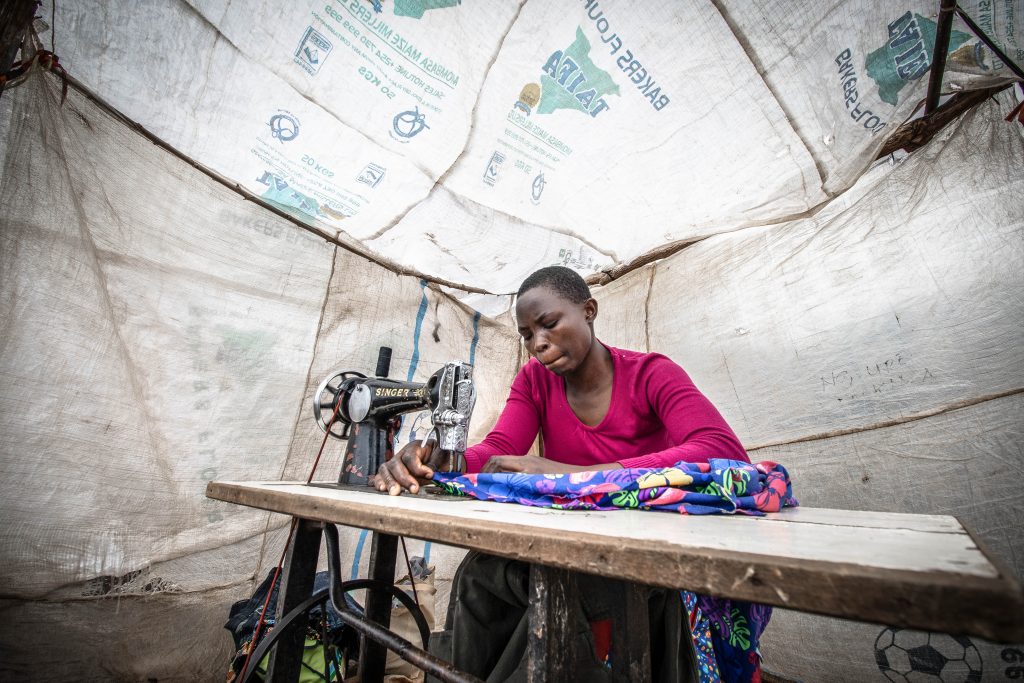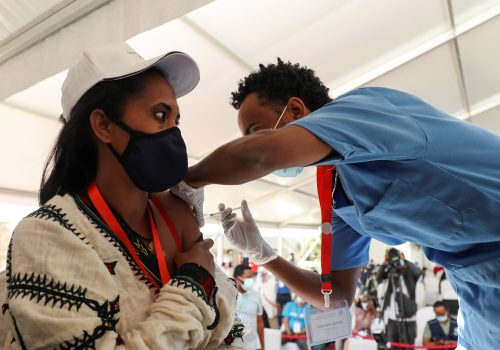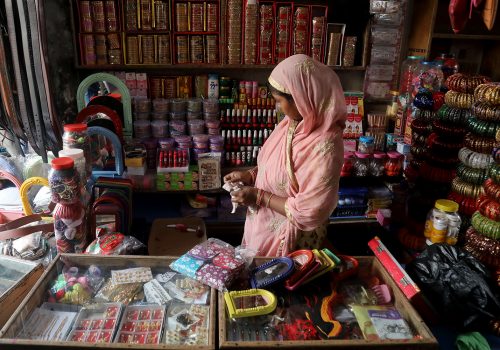There is little doubt that small- and medium-sized enterprises (SMEs) play an outsized role in most economies. They are employers, producers, service providers, and innovators who power integrated supply chains, driving global economic growth and job creation. SMEs comprise some 90 percent of businesses and employ more than half the world’s workers. In emerging and developing markets, formal SMEs contribute roughly 40 percent of national income (GDP) and generate at least seven out of ten jobs; and these estimates rise substantially if you take informal business into account.
Beyond their sheer employment power, SMEs are pivotal because of who they are as much as how many there are. Across countries of all income levels, a large—if not dominant—share of SMEs are owned by women and minorities, or employ them. Critically, entrepreneurship has become a key path out of unemployment for millions of youth facing historical crises. A focus on supporting SMEs is vital for economic recovery, and it’s time for governments and international institutions to step up.
Given their dominance of the market, SMEs—especially those owned and operated by women, youth, people with disabilities, or other minorities—absorbed a large share of the economic fallout from COVID-19. In large part, economic recovery will depend on SMEs’ ability to rebound despite tight labor and credit markets that will likely last for months, if not years, to come. In a World Bank, Facebook, and Organisation for Economic Co-operation and Development survey of 30,000 small-business operators across fifty countries, at least a quarter—and more than half in some countries—reported closing between January and May 2020. Of those that were still operating, a third had made employee cutbacks, and nearly two-thirds said sales were lower than the same period in the prior year. Female-led businesses were at a disadvantage—at least 7 percent more likely to be closed than male-led ones. Looking ahead, recent International Monetary Fund staff research warns that SME insolvency could hinder economic recovery across twenty countries in Europe and the Asia-Pacific region, putting twenty million jobs—more than a tenth of total SME workers, including nearly 40 percent of workers in accommodation and food services—at further risk.
To build back better, a strategic recovery should start with SMEs. Successful efforts by national governments and multilateral institutions should soften the range of supply, demand, information, and administrative constraints and focus on SMART strategies: Skills, Money, Adaptation/Adoption, Regulatory environment, and Trade.
- Skills: As commerce digitizes, new industries emerge, and business models evolve, small-business owners (and their employees) will need support to learn new technical and managerial skills and the know-how necessary to seize new market opportunities and techniques to stay competitive. Skills training is also changing as mentoring and experiential-learning initiatives surge to complement traditional class-based instruction, along with more online providers and resources. For example, Merezha—supported in part by the European Bank for Reconstruction and Development—is a digital platform allowing Ukrainian SMEs instant access to registered experts, case studies, and useful data to improve their business planning and operations in a variety of areas from new product development to franchising and ISO certification, marketing, or personnel matters.
- Money: Revenue replacement loans and concessionary capital are critical lifelines to SMEs to avoid a liquidity crisis, keep employees in place, and invest in technology or other operational investments. As millions of workers face permanent pandemic layoffs, entrepreneurship and self-employment may become a path of “necessity”—over “opportunity”—in the recovery, requiring start-up financing. Beyond new loans, guarantees, and credit, however, debt restructuring will be critical to alleviate the burden of existing debt and to mitigate risk to lenders and creditors alike. In Mexico, for example, the Ministry of Economy granted roughly sixty-five billion pesos ($3.3 billion) of loans with optional repayments to SMEs that maintain employees on payroll, self-employed and domestic workers, and family businesses previously registered in the Welfare Census. Mexico also opened financing facilities valued at $17.6 billion for commercial and development banks to channel resources to SMEs.
- Adaptation to green and adoption of digital economies: The twin forces of COVID-19 and climate change are accelerating technological transformation, increasing demand for resilient solutions, and catalyzing growth in green and digital sectors. This is both a challenge and an opportunity for SMEs. They will need support to mitigate negative impacts and to maximize positive potential in expanding digital and clean-energy markets. Digital adoption saved 37 percent of American small businesses surveyed by the Connected Commerce Council from full or partial closure during the pandemic. The global renewable-energy market is projected to reach nearly $2 billion in the next five years, while LinkedIn research predicts that there will be 150 million new technology jobs worldwide in the next five years. Examples of creative approaches include expanded options for women and youth entrepreneurs to gain e-commerce skills, COVID-driven fintech products (such as Ozé in Ghana), green credit guarantees (such as in Sweden), or regulatory incentives for clean energy or technology (such as Slovenia’s suspension of charging small firms for renewable and high-efficiency cogeneration of electricity and heat).
- Regulatory reform: Navigating bureaucracy has always been a challenge for SMEs, but the pandemic economy shone an even brighter light on hurdles including registration systems, labor laws, bankruptcy laws, and tax policy. More concerted efforts are needed to address the rising insolvency noted above—including partnering with the private finance sector to mitigate the financial collapse of targeted viable small firms, recalibrating employment law, and simplifying and digitizing business governance and administrative processes. To facilitate technology start-ups in Malaysia, for example, the government launched the National Technology Innovation Sandbox in July 2020, helping these companies test their business models and delivery mechanisms in a friendly regulatory environment. In Chile, the government addressed regulatory barriers to encourage remote and co-working facilities for SMEs by introducing changes to the labor code that give flexibility to both employers and employees.
- Trade: The demand side of SME support is too often overlooked, beyond traditional “business development services.” Initiatives that lower trade barriers, strengthen supply chains, and leverage national government procurement policies to optimize SME participation are necessary—particularly after a bout of protectionism inspired by COVID-19. (According to the International Trade Centre, export bans and other restrictions covered 73 percent of worldwide trade in virus-related products as of May 2020, as more than half of small businesses in Africa said they had difficulty getting supplies.) Globalization, regional integration, and shifting patterns of manufacturing, processing, and logistics amount to a greater number of entry points for SMEs given that global value chains account for an overwhelming 80 percent of trade. Trade policies and initiatives—such as the World Trade Organization’s Trade Facilitation Agreements—can benefit SMEs, as USAID demonstrates, by reducing the time and cost of doing business, smoothing the inefficiencies, and addressing the lack of economies of scale routinely faced by small business. To mitigate damage to Morocco’s largest industrial employer—the textile and clothing sector—the industry launched the online platform AMITH Marketplace to connect global buyers with SME-dominated Moroccan suppliers and to improve access to information.
While public health and vaccines remain the priority for containing the pandemic, there is no time to waste in making near- and longer-term investments in SMEs to stave off further economic collapse and put recovery on track—especially in low- and middle-income countries, where SMEs dominate the employment landscape. Targeting SME support to women, youth, persons with disabilities, or racial or ethnic minority business owners (and employees) will make for a more inclusive recovery and better, sustainable growth outcomes for millions of people across the globe.
Further reading
Image: A woman is seen working inside her small tailoring shop made with recycled Polypropylene sacks in Kibera slums, Kenya. Photo by Donwilson Odhiambo/SOPA Images/Sipa USA via Reuters.



